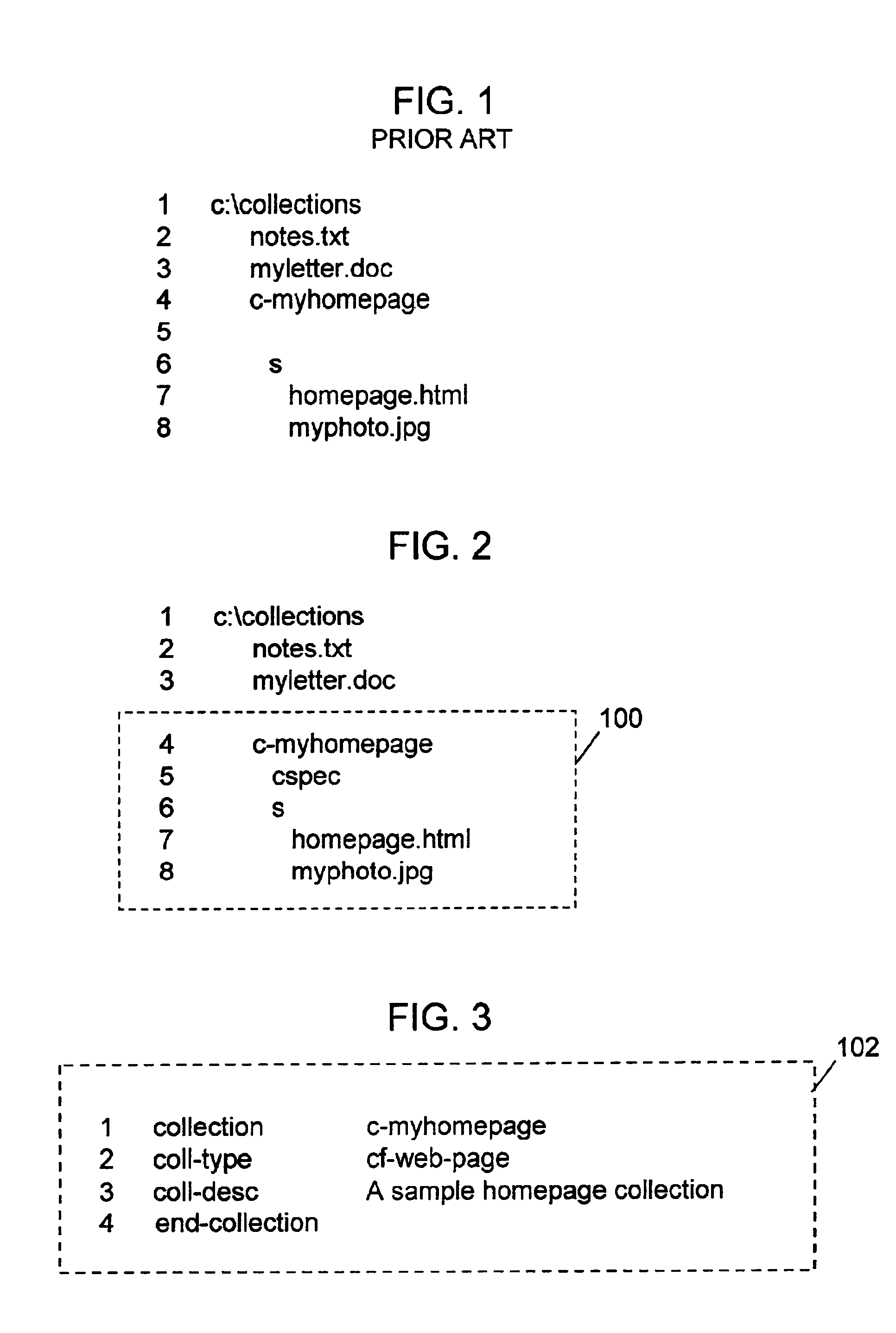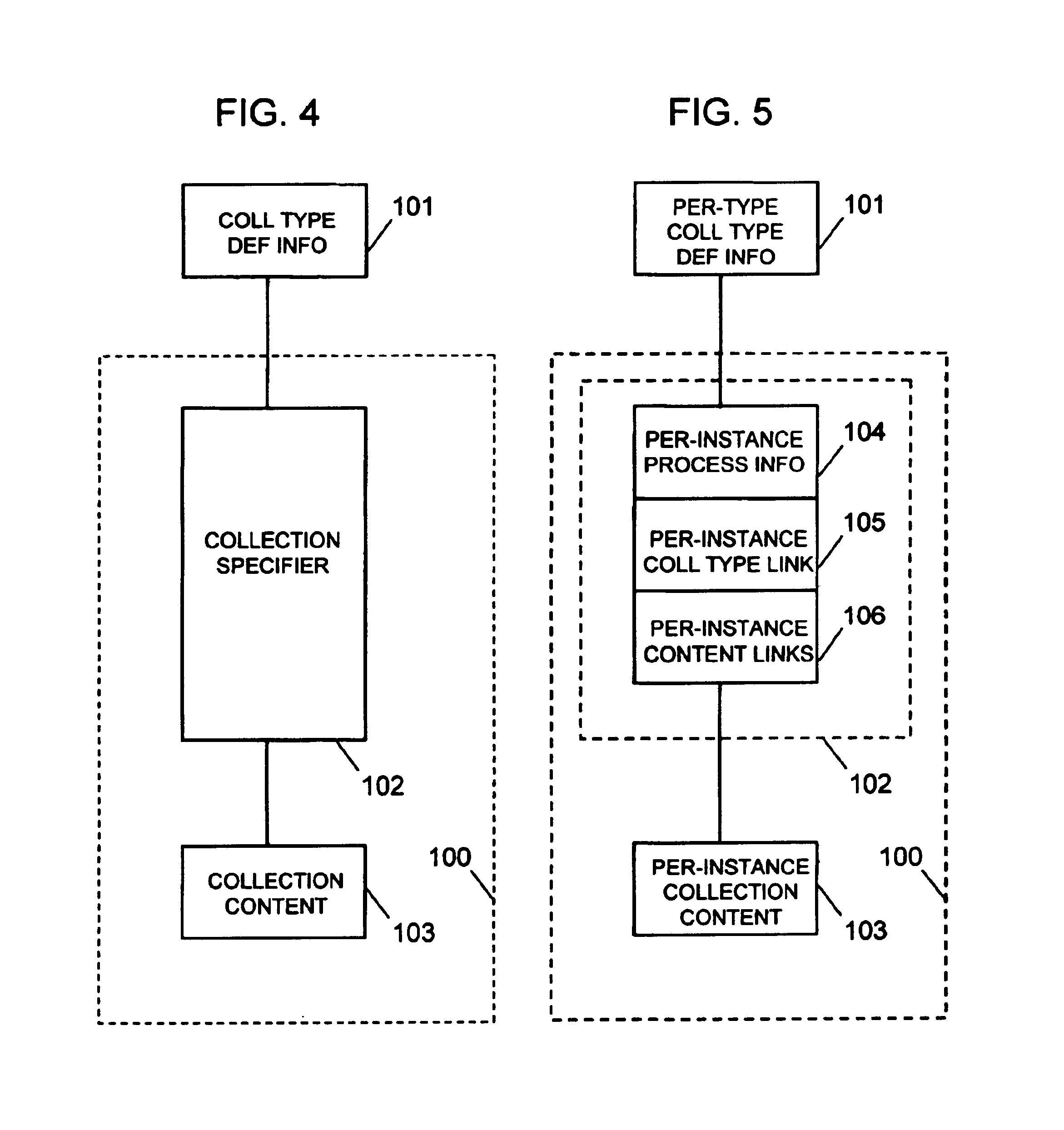Collection command applicator
a command applicator and command technology, applied in the field of automatic software systems, can solve the problems of increasing the cost of various adhoc scripts, generating additional costs for current practices, and arbitrary computer commands that cannot be replaced with automated systems, etc., and achieves the effect of efficient application of arbitrary computer commands, reusable and persisten
- Summary
- Abstract
- Description
- Claims
- Application Information
AI Technical Summary
Benefits of technology
Problems solved by technology
Method used
Image
Examples
embodiment
Collection Physical Representations—Main Embodiment
[0144]FIGS. 1-3 show the physical form of a simple collection, as would be seen on a personal computer filesystem.
[0145]FIG. 1 shows an example prior art filesystem folder from a typical personal computer filesystem. The files and directories shown in this drawing do not implement a collection 100, because no collection specifier 102, FIG. 2 Line 5 exists to associate a collection type definition 101 with collection content information 103.
[0146]FIG. 2 shows the prior art folder of FIG. 1, but with a portion of the folder converted into a collection 100 by the addition of a collection specifier file FIG. 2 Line 5 named “cspec”. In this example, the collection contents 103 of collection 100 are defined by two implicit policies of a preferred implementation.
[0147]First is a policy to specify that the root directory of a collection is a directory that contains a collection specifier file. In this example, the root directory of a collec...
PUM
 Login to View More
Login to View More Abstract
Description
Claims
Application Information
 Login to View More
Login to View More - R&D
- Intellectual Property
- Life Sciences
- Materials
- Tech Scout
- Unparalleled Data Quality
- Higher Quality Content
- 60% Fewer Hallucinations
Browse by: Latest US Patents, China's latest patents, Technical Efficacy Thesaurus, Application Domain, Technology Topic, Popular Technical Reports.
© 2025 PatSnap. All rights reserved.Legal|Privacy policy|Modern Slavery Act Transparency Statement|Sitemap|About US| Contact US: help@patsnap.com



